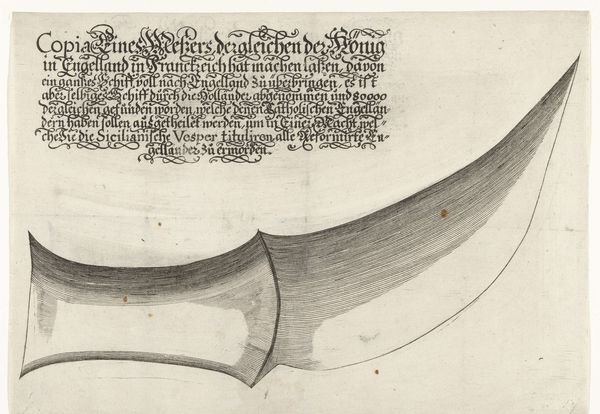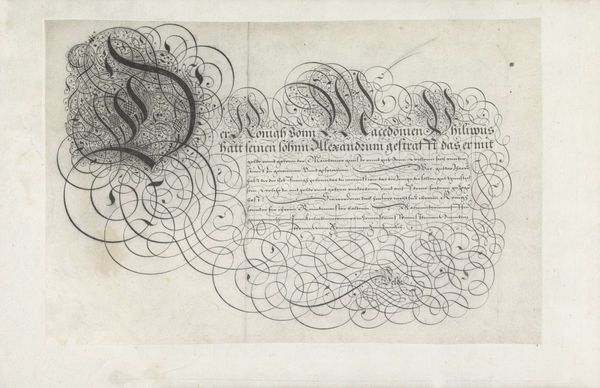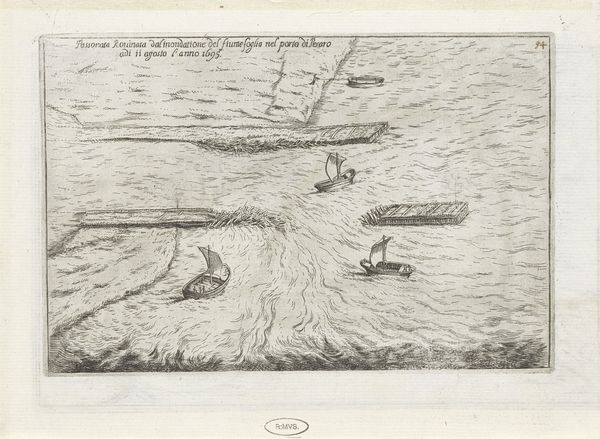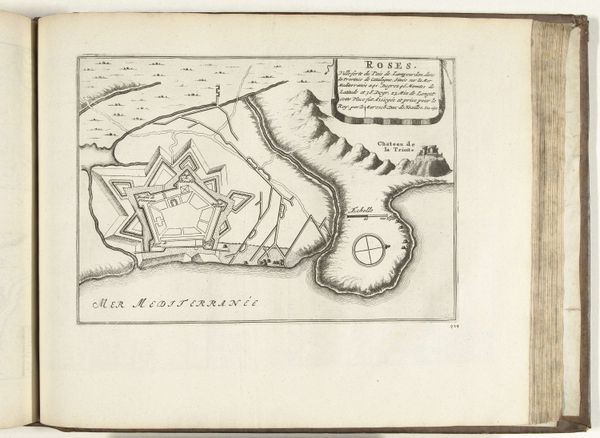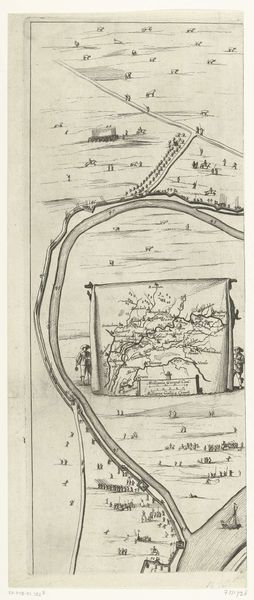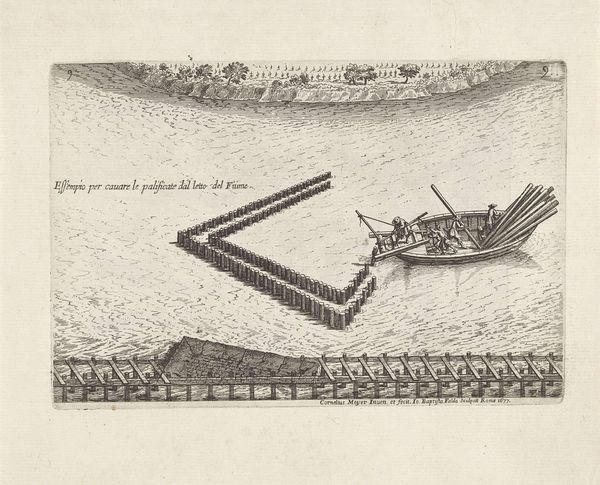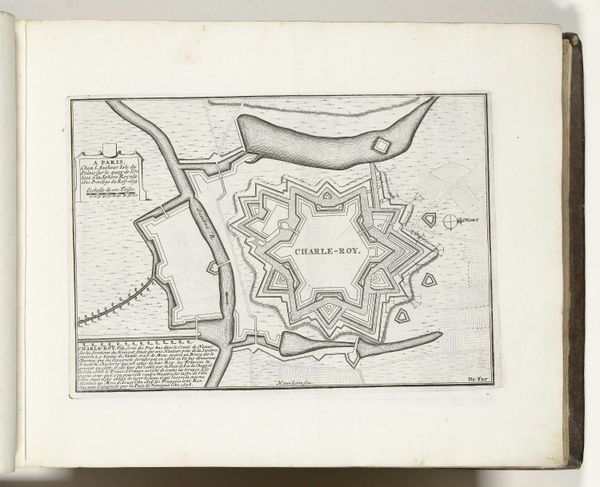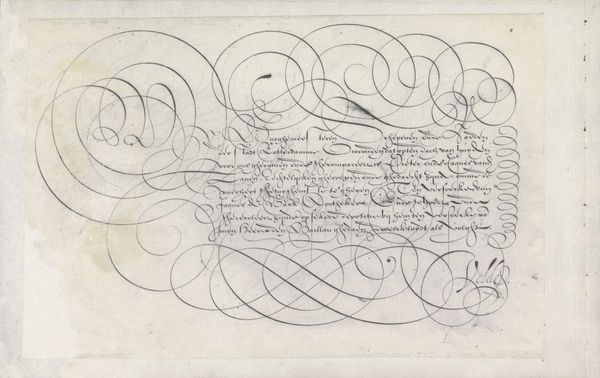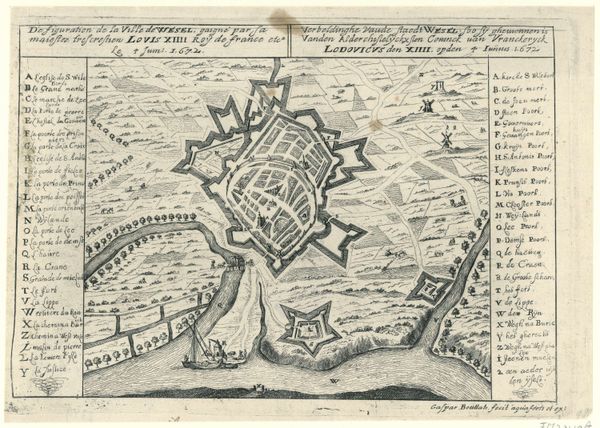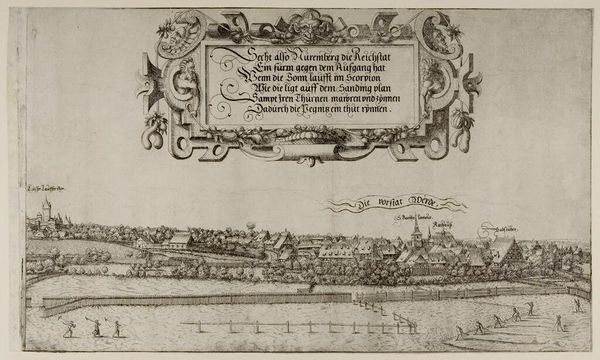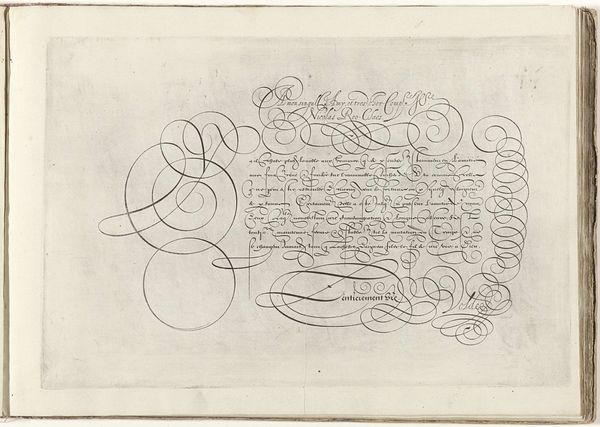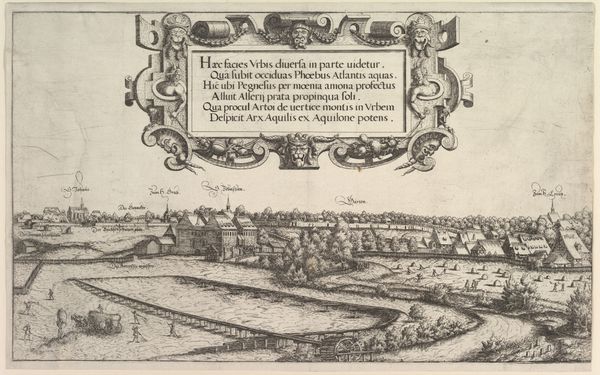
Mes aangetroffen op een Frans schip, waarmee de protestanten in Engeland vermoord zouden worden, 1688 1688 - 1689
0:00
0:00
print, engraving
#
aged paper
#
narrative-art
#
baroque
# print
#
old engraving style
#
hand drawn type
#
line
#
history-painting
#
engraving
Dimensions: height 113 mm, width 455 mm
Copyright: Rijks Museum: Open Domain
Curator: The stark simplicity of this engraving hits you right away, doesn't it? Editor: It does. Stark is the word. This single knife against the aged paper... It feels menacing, almost unsettling in its quiet way. Curator: Well, that feeling is by design. This is an engraving dating from 1688-1689, and the Rijksmuseum calls it "Knives Found on a French Ship Intended to Murder Protestants in England, 1688". It's attributed to an anonymous artist. Editor: So, this isn’t just a knife, it's a symbol loaded with political and religious terror. Knowing its historical context, one immediately recalls the anxieties and sectarian violence of the period. A single object carrying immense cultural weight. Curator: Precisely. The text accompanying the image details the purported discovery of ten thousand knives on a French ship. Look at the style: the clean lines of the baroque style amplifying that air of authority while simultaneously sparking a visceral fear through suggestion. The visual vocabulary here relies heavily on that cultural memory of religious conflict. Editor: I see what you mean. The image itself is devoid of drama, and in isolation it just seems like a knife. It only acquires its horrifying significance within a specific historical and cultural narrative. It speaks volumes about how fear was manufactured and disseminated through printed images. It’s propaganda, essentially. Curator: Exactly. Notice how even the type feels "hand-drawn." This gives the image a folksy, immediate character—as if to reinforce this event's alleged authenticity and the very real danger. The line work gives the impression that no expense has been spared and therefore, by extension, that its authenticity cannot be doubted. It wants you to instantly think that you yourself might be its victim. Editor: Considering the function of prints as a means of mass communication at that time, I begin to question the function of such images in fomenting public anxiety and paranoia. Were the fears it stoked genuine, or politically motivated? Was this 'knife' just as much a weapon for war in visual form? Curator: Good point! Images like these became tools to stoke the fires of religious animosity, galvanizing public opinion against perceived threats. This was no mere recording; it was incitement, plain and simple. Editor: A chilling reminder of the power of imagery in shaping social realities, even through something as simple as a knife. Curator: And a potent reminder that even seemingly straightforward depictions can carry tremendous symbolic and historical weight.
Comments
No comments
Be the first to comment and join the conversation on the ultimate creative platform.
